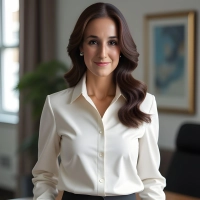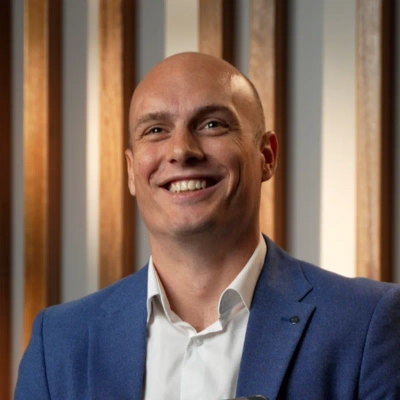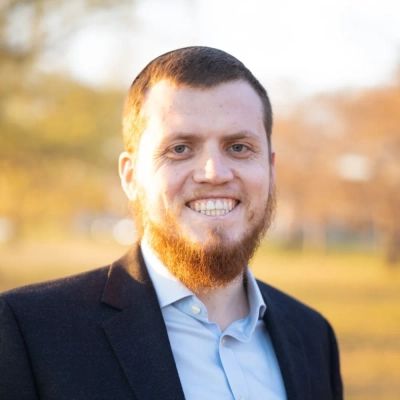In today’s fast-paced business world, successful CEOs understand the importance of continuous personal growth and avoiding burnout. This article presents valuable strategies for leadership development, drawing from the experiences of seasoned executives and industry experts. Discover practical approaches to gain fresh perspectives, balance tech leadership with personal growth, and transform challenges into opportunities for success.
- Listen to Your Team’s Advice
- Embrace Silence for Clearer Leadership
- Create Space for Reflection and Growth
- Schedule Learning to Prevent Burnout
- Hands-On Learning Sparks Fresh Insights
- Diversify Your Learning for New Perspectives
- Dedicate Time for Exploration and Innovation
- Step Out of Your Comfort Zone
- Apply Parenting Lessons to Leadership
- Transform Challenges into Learning Opportunities
- Balance Tech Leadership with Personal Growth
- Seek Mentorship for Continuous Improvement
- Connect with Founders for Better Decisions
- Integrate Personal Growth with Business Goals
- Alternate Between Deep Work and Exploration
- Embrace Mistakes as Learning Opportunities
- Prioritize Learning for Leadership Success
Listen to Your Team’s Advice
It’s interesting how it can be easier to listen to your team than to oneself. If my workload reaches the point where my colleagues are reminding and encouraging me to set an out-of-office message the next time I’m “away,” then that indicates I’m overdue for some relaxation.
I also believe in two concepts: practice and patience — both with myself and others. These allow me to implement new positive habits over time, so that I will ultimately not need consistent reminders of the best approach. Patience can often be the most challenging because of how long it can take to actually unlearn something that is no longer beneficial.
 Benjamin Farber
Benjamin Farber
President, Bristol Associates, Inc.
Embrace Silence for Clearer Leadership
As a CEO, I treat learning as a reset button. Podcasts, mentorship calls, or even reading outside my industry help me unplug from the pressure and reconnect with fresh thinking. One recent experience that shifted a lot for me was a leadership retreat where we spent half a day in silence. It felt uncomfortable at first, but it forced me to slow down and reflect. I walked away with clearer priorities, less reactive energy, and more space to lead with intention instead of urgency. That stillness made me sharper.
 Bhavik Sarkhedi
Bhavik Sarkhedi
Founder & Content Lead, Ohh My Brand
Create Space for Reflection and Growth
Learning and personal growth are part of my routine as a CEO. I don’t see them as separate from the job. They’re how I stay connected to what matters and avoid getting stuck in reactive mode. It’s easy to get caught up in the day-to-day, especially when you’re scaling a product, but taking time to reflect and reset is what keeps things moving in the right direction.
One thing I’ve learned is that stepping back doesn’t mean stepping away. I try to make space regularly to think about what’s working, what’s not, and where I need to grow. That might be through conversations with my team, listening more, or just creating time without a packed agenda. A recent example was when I took a few days to review how we were approaching product decisions. I realized we were moving fast but not always aligning tightly enough with our core mission. Slowing down to reflect on that helped me reset priorities and make clearer decisions with the team.
This also sets an example for the rest of the team, especially since we all work remotely. When you’re not physically switching off from an office, the lines between work and life can get blurry fast. If I’m not creating boundaries and making space to reset, it’s hard to expect others to do the same. The way I approach learning and well-being is something I try to model openly. It’s not about switching off completely; it’s about creating space to step back, breathe, and come back with a clearer mind.
That kind of reflection doesn’t just help the business. It helps me avoid burnout. When I’m learning and creating space to think, I’m more energized, more focused, and better at leading. It’s a simple cycle: stay curious, stay grounded, keep improving.
 Jamie Frew
Jamie Frew
CEO, Carepatron
Schedule Learning to Prevent Burnout
As a CEO in the rapidly evolving Health IT and AI space, continuous learning isn’t just a best practice; it’s existential. My approach is designed not only to keep me at the forefront of technology and market shifts but also, crucially, to serve as a vital mechanism for unwinding, gaining new perspectives, and preventing burnout.
Here’s how I approach it:
1. Dedicated “Deep Work” Blocks for Learning: I schedule non-negotiable time in my calendar, typically early mornings or late evenings, purely for learning. For me, the intellectual stimulation of grasping a complex new concept or technological advancement is genuinely restorative. It shifts my brain from operational problem-solving to expansive thinking.
2. Diverse Inputs, Beyond Tech: While I’m immersed in AI agents and health tech daily, my learning extends far beyond. I actively seek out content from behavioral economics, philosophy, and even historical biographies. Learning about something completely unrelated to my day-to-day can be incredibly refreshing and offers a unique mental palate cleanser.
3. Active Engagement with My Network: I’m part of several CEO peer groups and industry forums. These aren’t just for networking; they’re vital learning platforms. The shared experience and collective problem-solving are powerful antidotes to the isolation that can sometimes accompany the CEO role.
4. Experimentation as Learning: In health IT, especially with AI, there’s no substitute for hands-on experience. I encourage our team, and myself, to constantly prototype, test, and iterate. Failure isn’t a setback; it’s a data point. This experimental mindset reduces the pressure of needing to be “right” all the time and instead frames every outcome as a learning opportunity.
I spent several evenings reading academic papers and a few books on the neurology of decision-making and how excessive cognitive load leads to errors, frustration, and burnout — not just for patients, but critically, for clinicians using our platforms. We often talk about “user-friendly” interfaces, but this learning experience pushed me to think about “user-unburdening” interfaces, leveraging AI agents to absorb and manage the cognitive overhead.
It re-energized my conviction that our AI agent solutions aren’t just about efficiency, but about fundamentally improving the quality of life and reducing burnout for healthcare professionals.
 Howard Rosen
Howard Rosen
CEO, Nova Insights
Hands-On Learning Sparks Fresh Insights
I treat learning like a scheduled operating system upgrade. If I don’t carve out time for it, the company eventually feels the lag. Every quarter, I block two “learning sprints” on my calendar: one day to dive into a new topic unrelated to my core expertise, and one day to revisit a leadership or mental-fitness practice. The key is doing it off-site, with my phone on airplane mode, so it feels restorative, not like another task in the inbox. That separation lets me return with fresh context and the mental space to spot patterns I’d miss while buried in daily operations. It’s my way of recalibrating the zoom level, shifting from tactical firefighting to strategic horizon-scanning, which ultimately keeps burnout at bay.
A recent example was a weekend woodworking workshop I took with zero business agenda. Shaping raw lumber into a finished piece forced me into patient, hands-on focus, something tech leadership rarely demands. The physicality slowed my mind, and the instructor’s emphasis on “measure twice, cut once” echoed back at the office: I realized I’d been rushing product decisions without revisiting first principles. The Monday after, I introduced a simple pause-and-verify checklist before green-lighting new initiatives. That small change improved team clarity and reduced late-stage revisions, proof that stepping outside my domain didn’t just recharge me; it fed directly into better decision-making and a calmer workflow.
 Darryl Stevens
Darryl Stevens
CEO & Founder, Digitech Web Design
Diversify Your Learning for New Perspectives
I set aside time weekly for non-business reading — philosophy, history, and even fiction. This practice creates distance from daily pressures and provides new perspectives on leadership. Recently, reading “The Obstacle Is the Way” reframed how I handle setbacks — with less frustration and more clarity. That mindset shift created space to pause, not just push forward.
 Paul Bichsel
Paul Bichsel
CEO, SuccessCX
Dedicate Time for Exploration and Innovation
As a CEO, learning and personal growth are non-negotiables — they’re what keep decision-making grounded, adaptive, and human. I approach it with a mix of intentionality and curiosity. That means carving out time for structured learning — like executive workshops or reading on behavioral science—as well as unstructured experiences, like mentoring conversations or even travel, which often offer unexpected insights.
One recent experience that had a real impact on my well-being was attending a leadership retreat focused on deep work and digital minimalism. Stepping away from the constant noise of notifications and daily urgency allowed me to reconnect with long-term vision and creative thinking. More importantly, it reframed the idea of rest — not as inactivity, but as a strategic reset. That clarity not only made me more present at work but also helped me avoid the slow creep of burnout. Growth, for me, is about learning how to lead with purpose — without running on empty.
 Anupa Rongala
Anupa Rongala
CEO, Invensis Technologies
Step Out of Your Comfort Zone
I’ve made learning a core part of my rhythm by dedicating a weekly “Innovation Hour” — a 60-minute block carved out on my calendar solely for exploration. This could involve auditing a Harvard I-O Psychology class, testing a new AI tool in our PRISM Ascend workflow, or reading a chapter of a branding case study. That uninterrupted hour frees me from the endless to-do list and puts me into a learner’s mindset, providing fresh perspectives and a mental reset that makes it easier to step away from work without guilt.
Example: Just last week, I dove into a masterclass on “design thinking for writers.” Applying its rapid-prototyping exercise as a mini “creative play” at the end of my day — sketching out three wild campaign ideas in 10 minutes — did more than spark new content angles; it shifted my brain from problem mode into curiosity mode. I closed my laptop feeling energized instead of drained and woke up the next morning with a clear, calm focus that carried me through a packed client day without the usual burnout.
 Kristin Marquet
Kristin Marquet
Founder & Creative Director, Marquet Media
Apply Parenting Lessons to Leadership
I’m convinced that a leader must stay in constant motion, and this applies not only to business but also to personal growth. For me, personal development isn’t just about gaining new knowledge. It’s a way to “reset,” to see things from a fresh perspective, feel the drive, and reignite the inner fire. When you make decisions every day and lead a team, it’s easy to get stuck in routine or lose your clarity of thought. Learning helps me avoid burnout and, on the contrary, recharge.
Recently, I joined a hackathon as a participant — not as a CEO, but as a junior marketer. It was a completely new role for me. We were split into teams, worked on real cases, and our team won. It not only refreshes your mind but also gives you the feeling that you’re back in a growth phase. After that, I returned with new ideas. Sometimes, to lead a company better, you need to become a student again.
 Alexandr Korshykov
Alexandr Korshykov
Founder & CEO, DreamX
Transform Challenges into Learning Opportunities
My intellectual life has always been my compass. As someone trained in law and steeped in education, I seek clarity through critical thinking. But leadership also demands emotional agility, and that’s something I’ve had to develop over time.
Earlier this year, I began reading parenting psychology books, not for professional reasons, but to better understand my children. Ironically, those lessons have made me a better CEO. Concepts like co-regulation, emotional scaffolding, and perspective-taking now inform how I handle conflict, guide our team, and manage my own stress. It’s been humbling to realize how often I defaulted to efficiency when patience was what was needed. That shift didn’t just improve our culture; it helped me leave work at work. And when your home life feels whole, your leadership feels a lot less lonely.
 Joel Butterly
Joel Butterly
CEO & Founder, InGenius Prep
Balance Tech Leadership with Personal Growth
I approach learning through “applied curiosity” — pursuing knowledge that directly addresses current business challenges while expanding my perspective beyond marketing and demand generation. This learning strategy prevents burnout because it transforms work problems into intellectual puzzles rather than just operational stress, making difficult situations feel like growth opportunities.
Recently, I started studying behavioral psychology and decision-making frameworks after noticing that client resistance often stemmed from cognitive biases rather than rational objections to our strategies. Reading “Thinking, Fast and Slow” and implementing prospect theory concepts changed how I approach client conversations and internal team dynamics.
Instead of feeling frustrated when clients reject data-driven recommendations, I now understand the psychological factors influencing their decisions and can adjust my communication approach accordingly. This learning experience reduced my stress levels significantly because I stopped taking client pushback personally and started viewing it as predictable human behavior that can be addressed strategically.
This learning approach contributes to well-being because it reframes challenging situations as learning laboratories rather than sources of stress. When a major client questioned our campaign strategy, I applied loss aversion principles to restructure our presentation, focusing on risks they would avoid rather than gains they could achieve. The client approved the strategy immediately, and I felt energized by successfully applying new knowledge to solve a real problem. Learning becomes self-care when it provides practical tools for handling difficult situations more effectively while satisfying intellectual curiosity that keeps work engaging rather than merely demanding.
 Matt Bowman
Matt Bowman
Founder, Thrive Local
Seek Mentorship for Continuous Improvement
I am still in my early to mid-twenties, so I know that by age alone I still have so much to learn! Even beyond that, I think constant learning is important for everybody, regardless of age. So, I like to do things like attend workshops, listen to TED Talks, and teach myself new skills. I try to make the most out of the time I have available to do these things. I want to be the best leader for my team that I can be, and since we are in the tech industry, I also know that staying up-to-date on the latest developments is crucial for success.
At the same time, I also want to make sure I am prioritizing my own wellbeing so that I can be the best leader I can be. I watched a great TED Talk recently called “The Happy Secret to Better Work,” which is actually a pretty old one, but it gave great perspective about work-life balance and I learned a lot.
 Edward Tian
Edward Tian
CEO, GPTZero
Connect with Founders for Better Decisions
One thing that I do is prioritize mentorship. I’ve had mentors throughout my entire professional career, and I didn’t want that to stop when I became CEO, so I still meet with my current mentor regularly. He’s helped me in so many ways with things like gaining new perspectives when I’ve hit a wall, or even helping me figure out how to get a better work-life balance. One recent learning experience that had a positive impact on my well-being was a few months back when my mentor helped me come up with a new strategy for something my business was struggling with. I had been really stressed out for a while and couldn’t figure out what to do, and my mentor helped me get past that.
 Seamus Nally
Seamus Nally
CEO, TurboTenant
Integrate Personal Growth with Business Goals
As a CEO, I learn by staying close to people who are also building. Every week, I spend time with founders who are solving real problems. These conversations improve my thinking and help me make better decisions.
Recently, I started setting aside time without meetings or screen time; just space to think and reset. That practice has improved how I approach challenges and lead the team.
Making time to think helps me stay clear, prioritize what matters, and lead with more focus.
 Alex Smereczniak
Alex Smereczniak
Co-Founder & CEO, Franzy
Alternate Between Deep Work and Exploration
This tension between productivity and personal development has been one of the biggest challenges in my leadership journey. If I spend time learning calligraphy, am I stealing time from my business goals? But without some way to decompress, burnout becomes inevitable. Here’s how I’ve solved this dilemma through what I call “strategic cross-training.”
1. Use the integration strategy
I needed a blog for my business. Instead of treating it as another task on my to-do list, I thought: how can I combine this business necessity with personal growth and creative outlet?
My solution was to focus on creating visually stunning, almost cinematic content for the blog. This seemed completely unrelated to my core business skills — I had zero background in visual design or video production. But that’s exactly what made it perfect.
This approach serves three purposes simultaneously. First, it keeps me productive — I’m still publishing content and building the business. Second, it forces me to develop entirely new skills that have nothing to do with my day-to-day responsibilities. Third, and most importantly, it becomes my way to “unwind” and mentally decompress.
2. Get unexpected business benefits
Something fascinating happened when I started focusing on beautiful visuals. My eye for design began developing rapidly. Suddenly, I found myself looking at our corporate branding with fresh perspective, thinking, “Let’s examine our design approach differently now that I understand these principles.”
Learning skills outside your expertise creates unexpected cross-pollination. The visual design work didn’t just help me relax. It actually improved how I think about our company’s entire aesthetic presentation.
3. Use the psychological framework
This integration strategy eliminates the anxiety that comes from feeling like you’re “wasting time” on hobbies. When your personal development directly supports business objectives, there’s no guilt about taking time away from core responsibilities.
The key insight is combining personal well-being with professional goals rather than treating them as competing priorities. This way, you’re never fully “off” business mode, but you’re also never stuck in the same mental patterns that lead to stagnation and burnout.
 Jeff Tilley
Jeff Tilley
Founder & CEO, Muncly
Embrace Mistakes as Learning Opportunities
As a CEO, I view learning not just as a skill-building exercise but as something critical to long-term survival. The world is changing so fast that those who don’t stay at the edge of what’s possible can quickly fall behind. That said, running a startup is mentally and emotionally taxing, so I intentionally create space for learning that’s both structured and serendipitous. I alternate between deep work, such as studying a new area of marketing, and lighter curiosity-driven exploration, like listening to founder interviews or industry podcasts while exercising. This gives my mind room to breathe while still expanding my perspective.
One recent learning experience that had a profound impact on my well-being was diving into Stoic philosophy, particularly Marcus Aurelius’ Meditations. It reminded me that while I can’t control outcomes, I can control how I respond to pressure. That shift in mindset helped me manage stress better, make decisions with more clarity, and avoid spiraling into burnout, especially in those moments when everything feels urgent.
 Paul Towers
Paul Towers
Founder & CEO, Playwise HQ
Prioritize Learning for Leadership Success
For some background, I am not your typical CEO. I run a Judaica e-commerce business and am a very active Rabbi at Georgetown and the Pentagon.
This means I’m running between crunching numbers for top-trending mezuzahs and rushing to answer serious questions of faith.
That being said, I approach learning with complete humility. I assume I will make mistakes, tons of mistakes, and I view these mistakes as an intrinsic part of growing. Maybe I’m wrong, but being a perfectionist leads to burnout. Humility and embracing mistakes is letting loose, being creative, and finding hidden solutions.
For example, I recently hired a marketing manager who really didn’t understand the product or the audience. We lost about $10K on Google Ads. But instead of beating myself up, I just laughed it off and said, “Thank G-d, that was a $10K course — and honestly, I got off cheap.”
It reminded me that no one knows this niche better than we do, and that the message we send has to be super refined and targeted. There’s definitely no price tag on that lesson.
 Menachem Shemtov
Menachem Shemtov
Owner, Director, Rabbi, Jluxury

